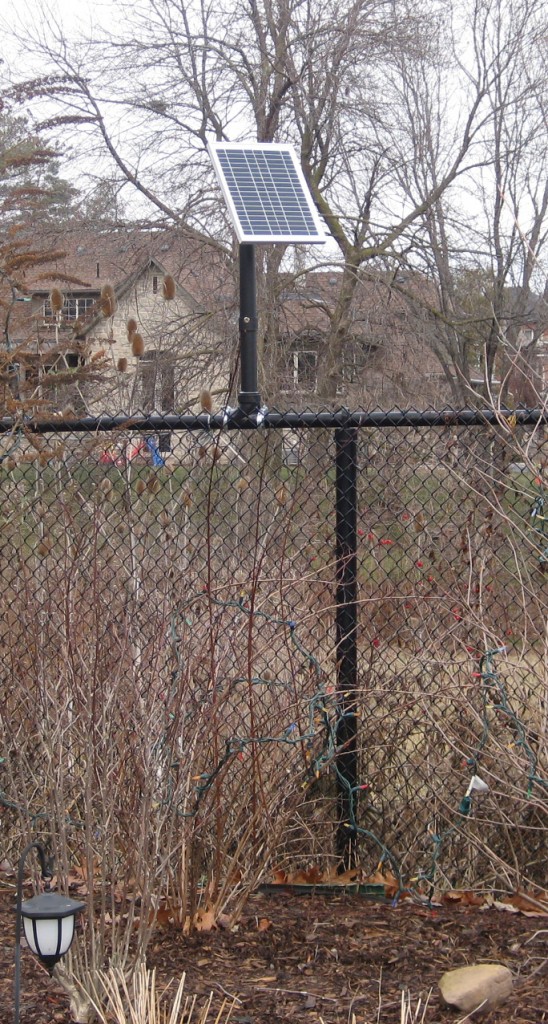Going solar doesn’t mean shelling out thousands of dollars, this DIY Solar Install is an example where Dave from Plastibots spent a little more than $200 to get a start in solar power. Lots of people think that to get into the game you need to go all out, here is an example where you can test the water on the cheap. I have been thinking of doing something similar using wind power, however the power of my procrastination is also a potent resource. 🙁
“Project Materials (all prices in CAD):
- 12V 12Amp Hour Lead Acid Sealed Battery: $50
- Sea Sense Marine Battery Box: $20
- Solar Charge Controller: $32
- 10 Watt Solar Cell:Â $55
- 75 Watt Inverter: $10
- Various Connectors/Nuts/Bolts/Other materials: $20
- Wire Line (40ft): $30
- PVC Piping: $10″



Permalink
Is this just so he can dip his toes into the world of solar power? I didn’t see anything mentioned about what load he’s going to put onto the stored energy in the battery.
The setup he put together would be ideal for some half-decent garden lighting, just eliminate the mains inverter and get lights (preferably LED) that can run from a 12v lead acid battery.
One thing the guy should definitely do is some testing with a multimeter, battery voltage, current from the panel in full sunlight, and most importantly how much watts the inverter uses even when it’s not powering anything because I tested a cheap 150watt car inverter and it drew 5 watts from the battery while just sitting there doing nothing !
Permalink
I guess I don’t have a lot of experience with solar, but can anyone tell me what the purpose of the charge controller is? I was under the impression that you could just connect the solar cell through a diode to the battery and the load to that. I could be way off.
Permalink
NatureTM:
Solar panels can output higher then their rated voltage, IE Cold day and direct sun or edge of cloud effect. This could overcharge the battery. I’m not sure how often this would happen on a 10 Watt Panel however, i’m sure its possible with the higher wattage panels.
Permalink
Great idea for being green and testing the solar concept, but does spending $200 to light some LED’s make economical sense? I’m all for “green” but it also has to have a reasonable payback period.
Permalink
A charge controller is to make sure the solar panel doesn’t overcharge the battery. Very small solar panels can be connected directly to the batteries without charge controllers because the battery will be able to dissipate the extra energy (something to the effect of Watt_capacity / 10).
This project is kinda boring because the patio lights already do this for $5-15, and more compact and easy.
The inverter is a complete LOSS on the system and not required – the patio lights run at 12V, the battery is at 12V, all you really need is something to prevent it from draining the battery below 12V (very damaging for lead-acid batteries) and something to turn then on only at night (a photocell and transistor combo of sorts). And yes, inverters vary a lot on idle power draw, so best not to keep them on when you don’t need to.
My final point is that once the battery is full, the power is lost – one of the reason grid-tying solar panels is way more efficient (but way more expensive).
Permalink
I agree, the inverter is a waste of 5-10% of their power when it could just be directly connected to the 12VDC.